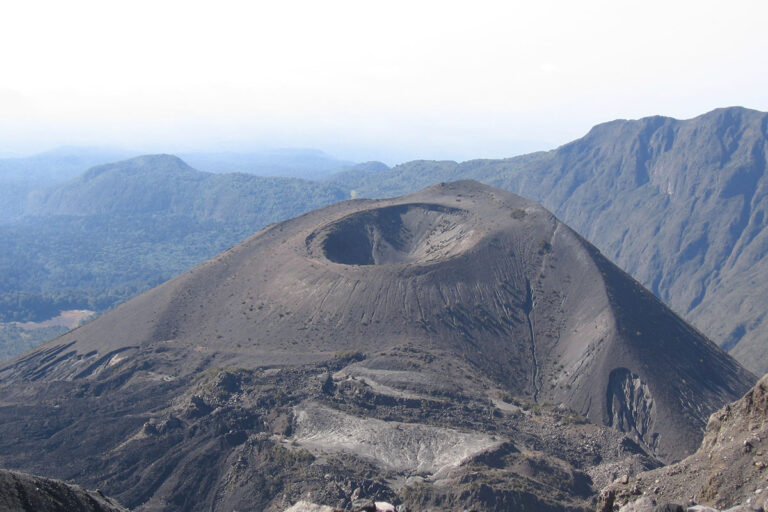ARUSHA NATIONAL PARK

Arusha National Park – Size & Establishment
Arusha National Park is a small yet diverse park located in northern Tanzania, just 25 km from Arusha town. It covers an area of approximately 552 square kilometers. The park was officially established in 1960, combining the Mount Meru Crater, Ngurdoto Crater, and Momela Lakes into one protected area. Despite its smaller size compared to other Tanzanian parks, Arusha offers a rich variety of landscapes, including montane forest, savannah, alpine moorland, and volcanic features. Its location near Kilimanjaro International Airport makes it a convenient first stop for visitors heading to Tanzania’s famous northern safari circuit.
Animals to See in Arusha National Park
Arusha National Park is not home to large predators like lions but offers a wide range of wildlife in a compact area. Giraffes are commonly seen browsing in open fields, along with zebras, buffaloes, and warthogs. The forested areas host blue monkeys, black-and-white colobus monkeys, and bushbucks. You may also spot waterbucks, dik-diks, and the rare leopard, though sightings are uncommon. Hippos are found near the Momela Lakes, while elephants can occasionally be seen near the forested slopes of Mount Meru. The variety of ecosystems makes the park ideal for wildlife viewing within a short day trip.
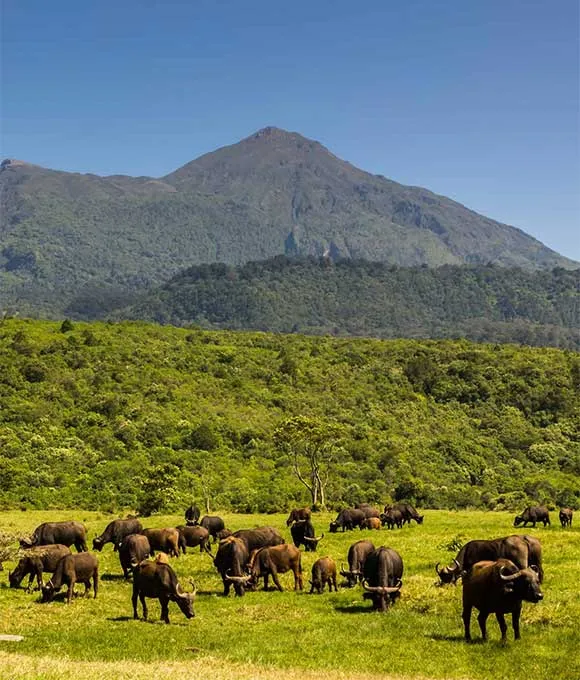
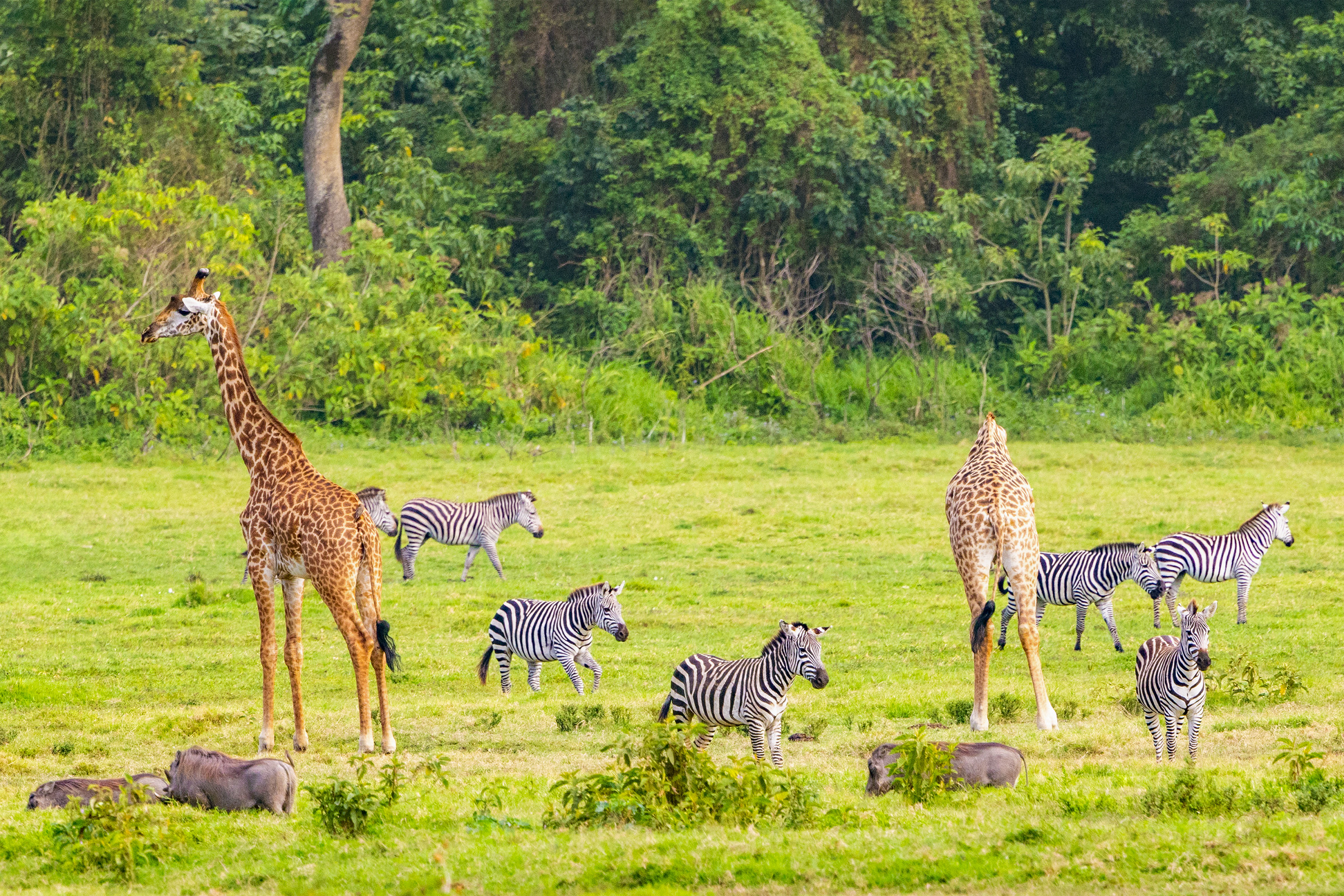
Best Time to Visit Arusha National Park
The best time to visit Arusha National Park is during the dry seasons, from June to October and January to March. During these months, wildlife is easier to spot as vegetation is thinner and animals gather near water sources. Clear skies also offer better views of Mount Meru and Mount Kilimanjaro in the distance. The rainy seasons, from March to May and November to December, can make trails muddy and wildlife harder to see, but the park becomes beautifully green and birdlife is abundant. Since Arusha is a year-round destination, even the wetter months can offer rewarding experiences for nature lovers
Flamingos & Birds in Arusha National Park
Arusha National Park is an excellent birdwatching destination, home to over 400 bird species. The Momela Lakes, especially, attract lesser and greater flamingos, which are often seen feeding in large numbers during the dry season. These lakes provide the saline and shallow waters flamingos prefer. Other common birds include African fish eagles, hornbills, silvery-cheeked hornbills, turacos, herons, and cormorants. The park’s varied habitats—from lakes and wetlands to forests and open grasslands—support a rich diversity of birdlife. Whether you are a seasoned birder or a casual observer, Arusha National Park offers fantastic opportunities for bird photography and viewing
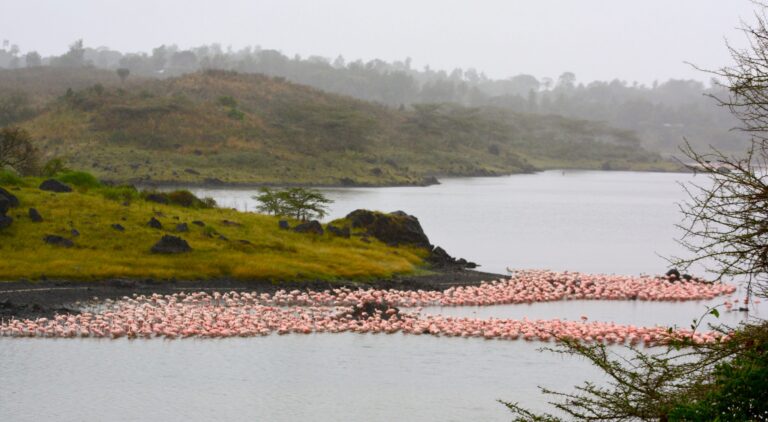
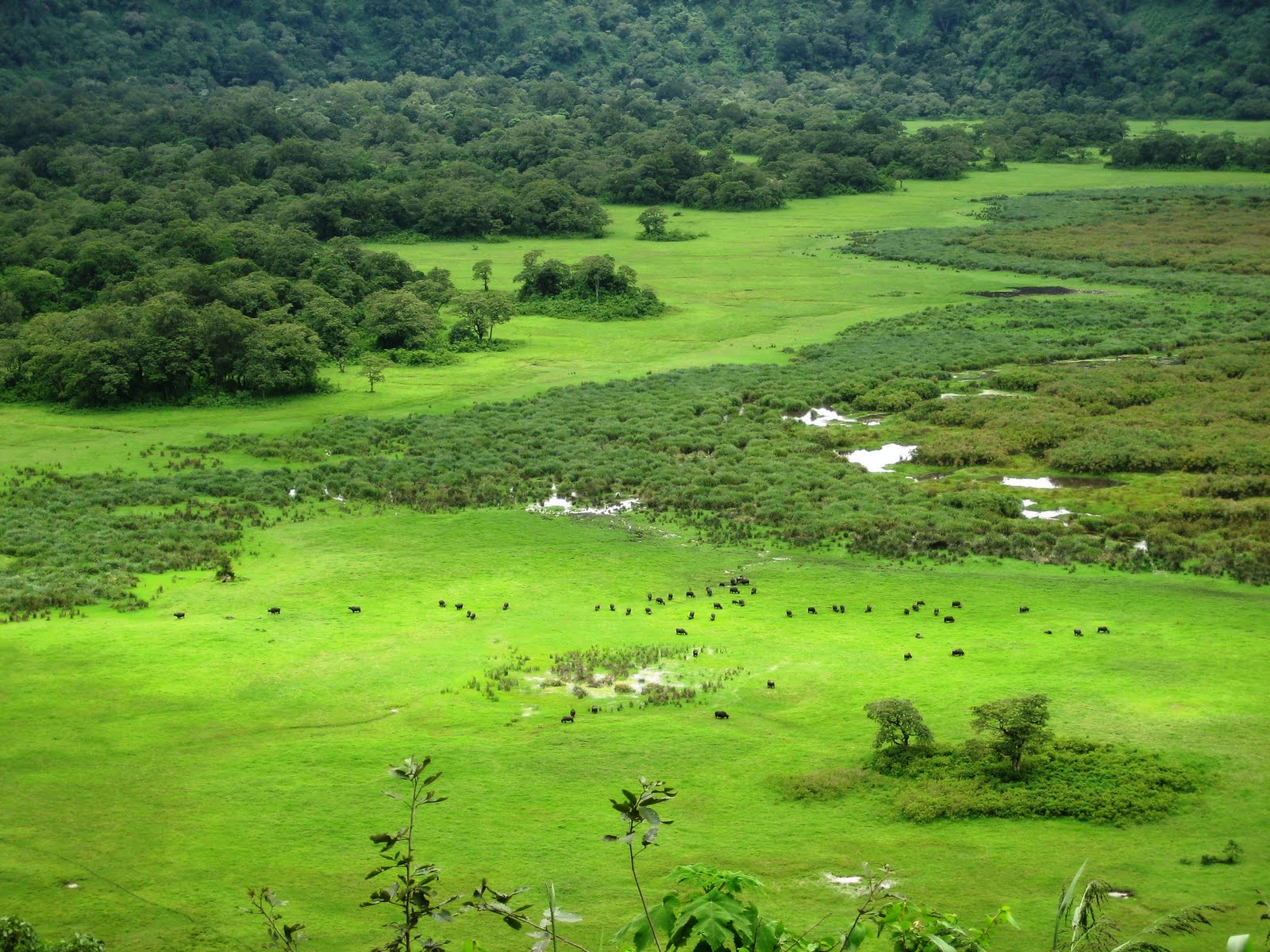
Ngurdoto Crater
The Ngurdoto Crater is a stunning, extinct volcanic caldera located in the southern part of Arusha National Park. Often called “Little Ngorongoro,” the crater is about 3 kilometers wide and surrounded by steep, forested walls. The crater floor is mostly swampy and grassy, making it a perfect grazing ground for buffaloes, warthogs, and waterbucks. Colobus monkeys and blue monkeys are often seen in the surrounding forest canopy. Though visitors are not allowed to descend into the crater itself, several viewpoints along the rim offer breathtaking panoramic views. The crater’s unique ecosystem makes it a highlight of any park visit.
Flamingos & Birds in Arusha National Park
Arusha National Park is an excellent birdwatching destination, home to over 400 bird species. The Momela Lakes, especially, attract lesser and greater flamingos, which are often seen feeding in large numbers during the dry season. These lakes provide the saline and shallow waters flamingos prefer. Other common birds include African fish eagles, hornbills, silvery-cheeked hornbills, turacos, herons, and cormorants. The park’s varied habitats—from lakes and wetlands to forests and open grasslands—support a rich diversity of birdlife. Whether you are a seasoned birder or a casual observer, Arusha National Park offers fantastic opportunities for bird photography and viewing

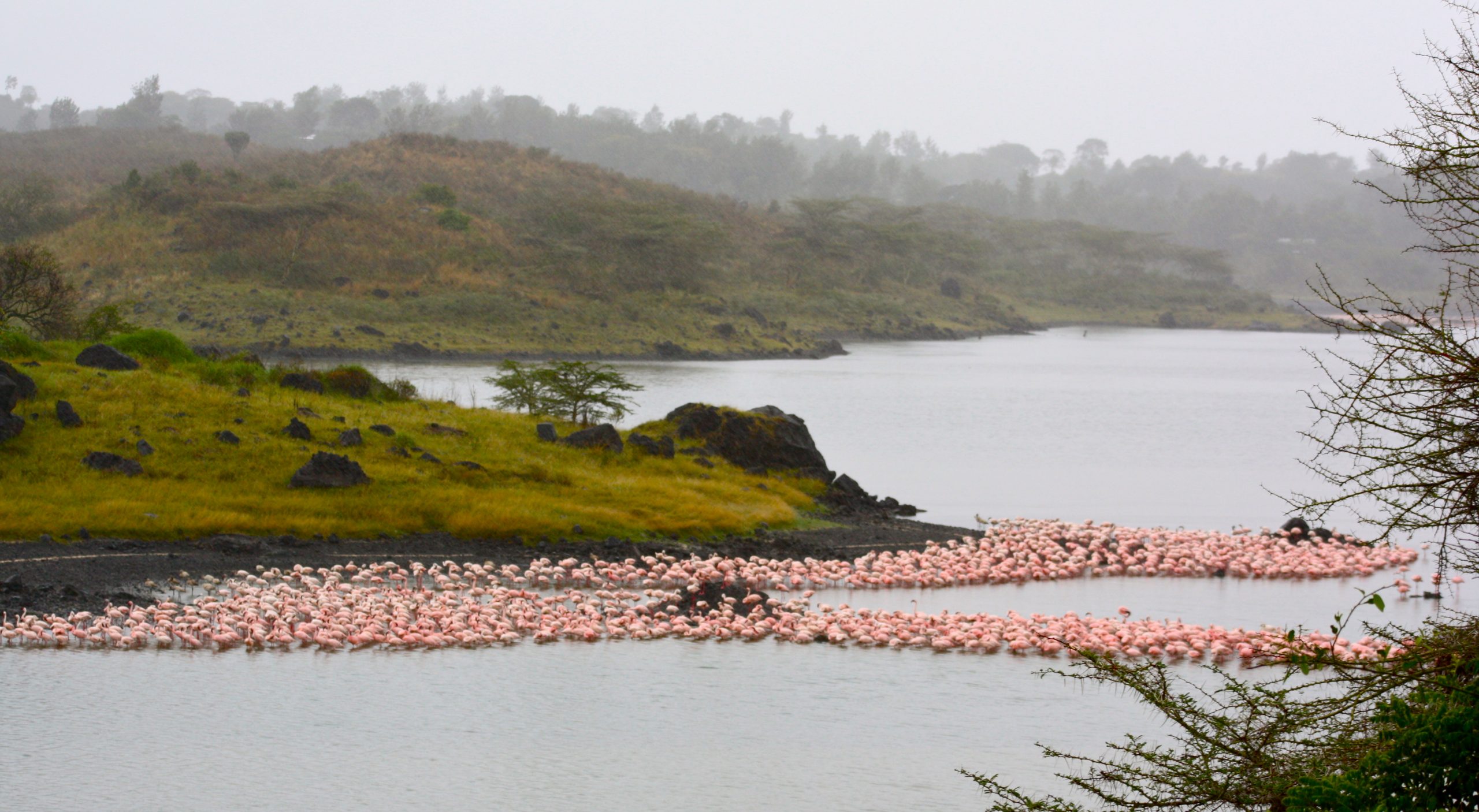
Small & Big Momela Lakes
The Momela Lakes are a chain of seven shallow, alkaline lakes located in the northeastern part of Arusha National Park. Among them, Small and Big Momela Lakes are the largest and most frequently visited. These lakes are known for their vivid colors, which change due to algae and mineral content. The lakes attract a wide variety of wading birds, including large flocks of flamingos, especially during the dry season. Hippos can also be seen in the deeper parts. The lakes’ peaceful surroundings, with forested hills and open plains, create a perfect backdrop for game viewing, birdwatching, and photography
Walking Safari in Arusha National Park
Arusha National Park is one of the few parks in Tanzania where walking safaris are allowed and highly recommended. Guided by armed rangers, visitors can explore the park’s diverse habitats on foot, offering a more intimate experience with nature. Walks often pass through lush forest, open plains, and past wildlife such as giraffes, buffaloes, zebras, and various antelope species. One of the most popular routes leads to the Ngurdoto Crater rim or the Momela Lakes, with great views and chances to spot birds. Walking safaris provide a chance to observe small animals, tracks, plants, and insects missed during vehicle tours.
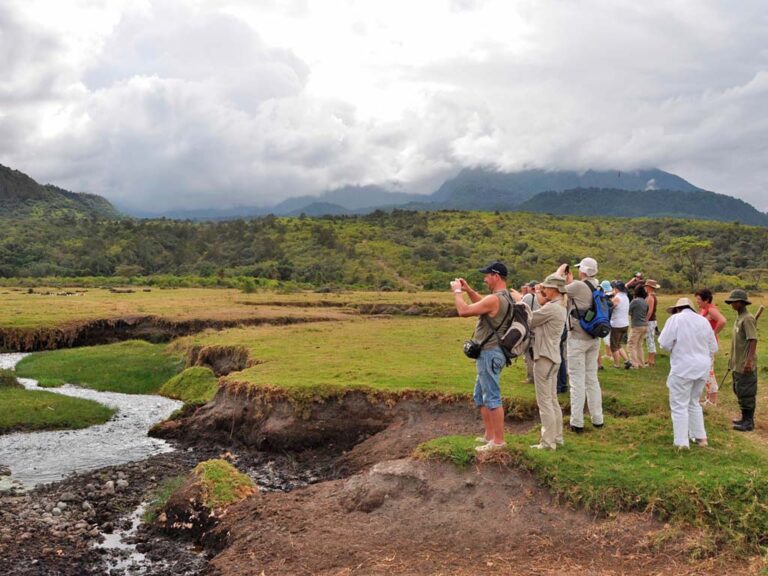
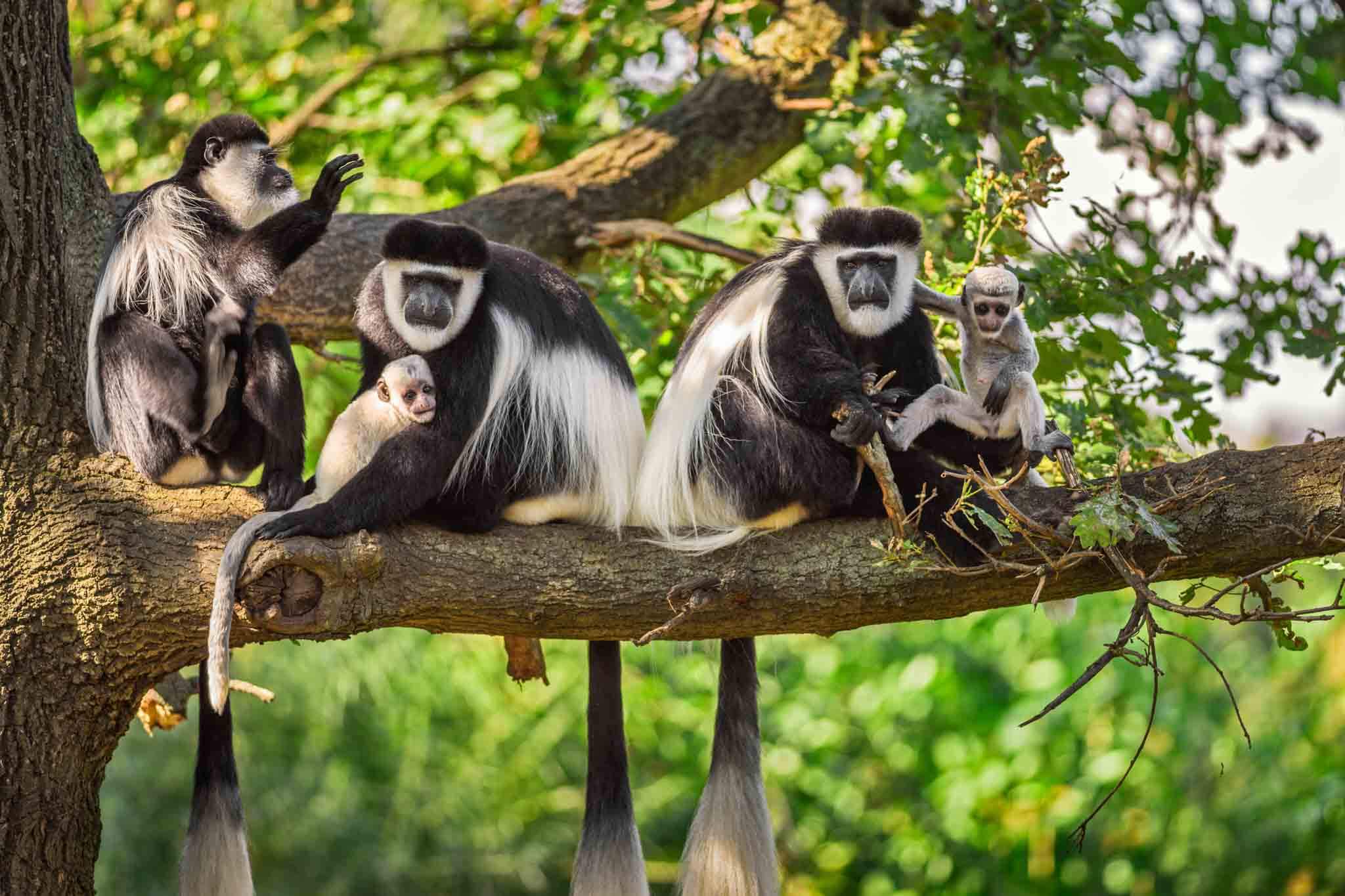
Colobus Monkey
The black-and-white colobus monkey is one of the most iconic primates found in Arusha National Park. These monkeys are easily identified by their long, silky white tails and striking black-and-white coats. They are often seen in family groups high up in the forest canopy, especially around the Ngurdoto Crater and Mount Meru forest slopes. Colobus monkeys are leaf-eaters, feeding mostly on young leaves and flowers. Unlike other monkeys, they are quiet and have no thumbs, which helps them swing gracefully between branches. Watching these acrobatic creatures leap through the trees is a favorite experience for visitors to the park.
Mount Meru
Mount Meru, standing at 4,566 meters, is the second-highest mountain in Tanzania and a centerpiece of Arusha National Park. This dormant stratovolcano offers a challenging and scenic trek that typically takes 3 to 4 days. The ascent passes through rich montane forests teeming with wildlife, including monkeys, buffaloes, and birds, before reaching alpine desert and summit views. On clear days, climbers are rewarded with breathtaking vistas of Mount Kilimanjaro and the surrounding landscape. Mount Meru is also a great acclimatization hike for those planning to climb Kilimanjaro. Its dramatic crater and ridge line make it a hiker’s paradise.
